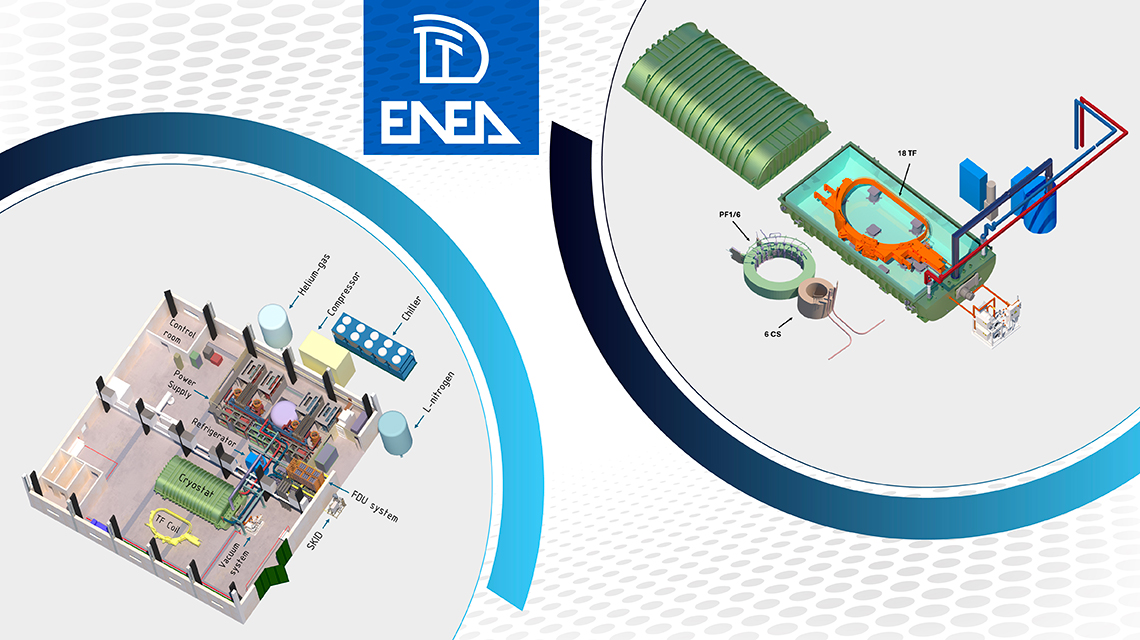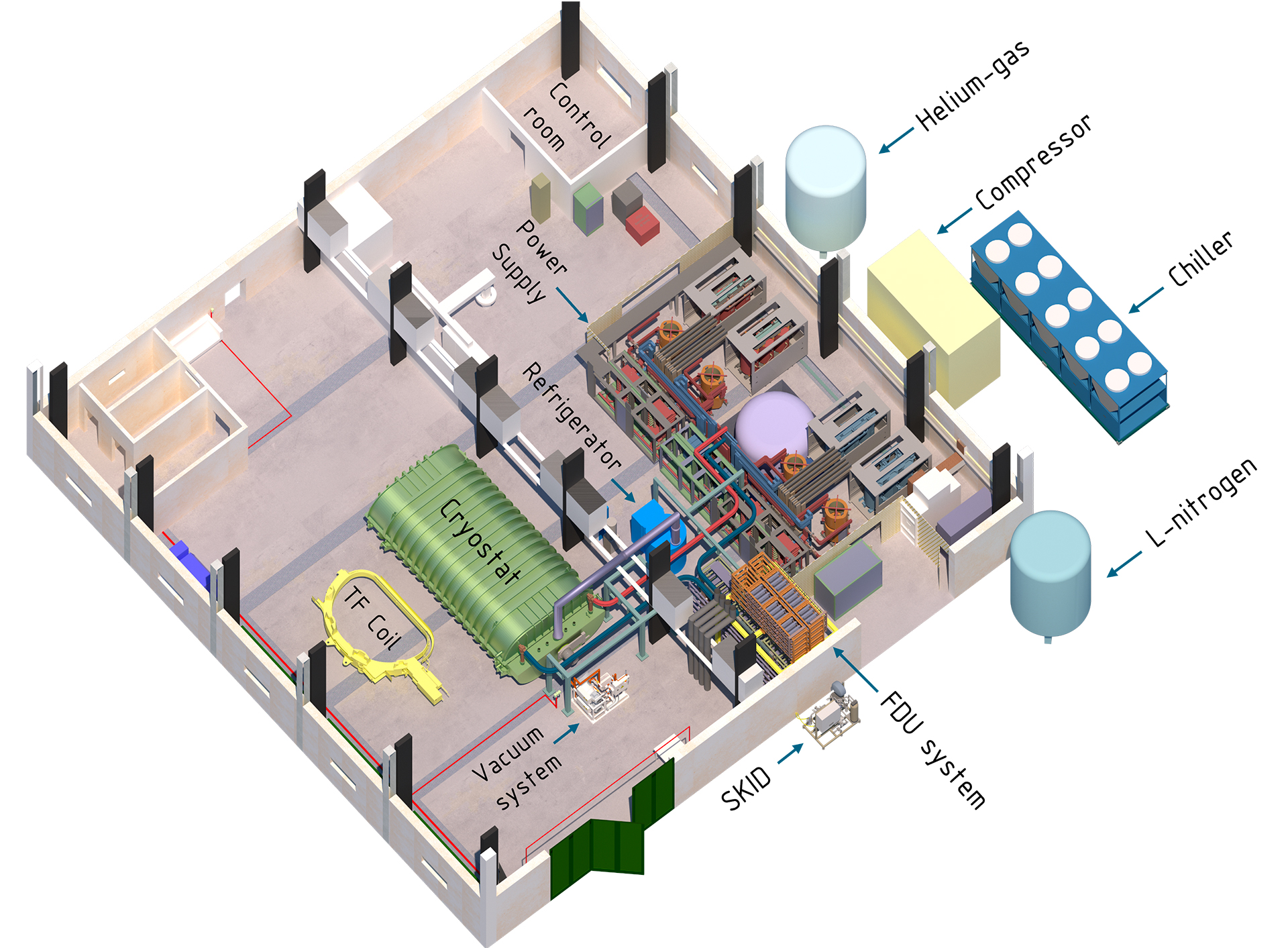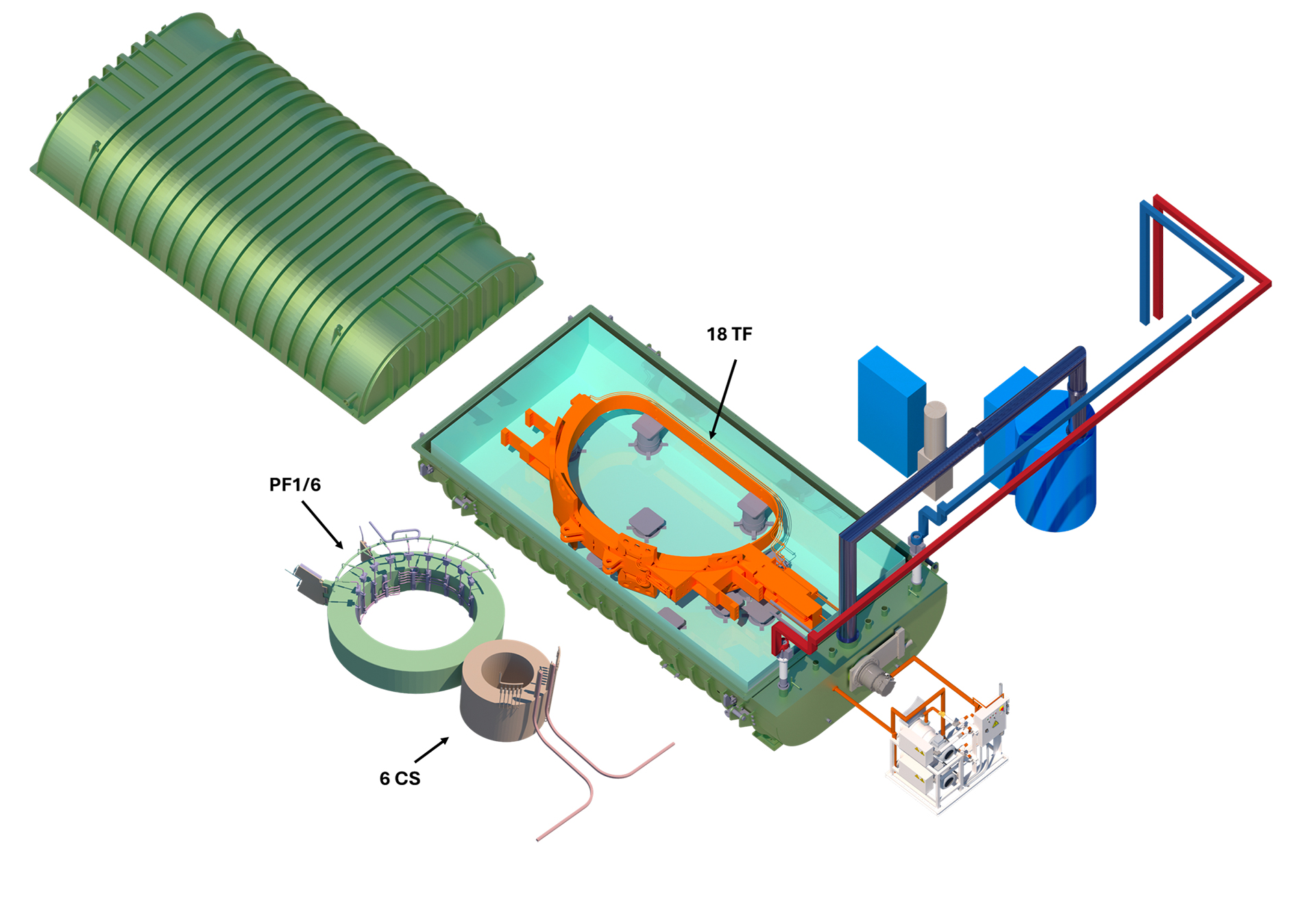Italian National Agency for New Technologies, Energy and Sustainable Economic Development

Fusion energy: Italy’s largest laboratory for testing superconducting magnets now operational
In addition to supporting the DTT reactor, the facility will be available to the international scientific community
A cutting-edge strategic infrastructure has been inaugurated for testing and qualifying the 26 superconducting supermagnets designed for the Divertor Tokamak Test (DTT) — the fully Italian experimental fusion reactor under construction at the ENEA Research Center in Frascati (Rome). The facility, named the Frascati Coil Cold Test Facility (FCCTF), has been specifically designed to test — under real operating conditions — the DTT magnetic system, which consists of 18 toroidal field coils, 6 central solenoid modules, and 2 poloidal coils. These are made with low-temperature superconductors that operate at liquid helium temperatures (−269 °C).
Beyond supporting the DTT reactor, the facility will also be available to the international scientific community for the testing and qualification of high-temperature superconducting (HTS) cable prototypes — operating up to liquid nitrogen temperature (−196 °C) — thus fostering the development of cutting-edge technologies also applicable to other sectors such as transport and power grids.
Thanks to state-of-the-art construction solutions and high-tech materials, these powerful magnets will be able to confine a gas of hydrogen isotopes (deuterium and tritium) inside a toroidal structure, where it will be heated to over 100 million degrees, reaching the plasma state, an extreme physical condition required to trigger the nuclear fusion process.
“The DTT is a strategic project for Italy and for Europe. With the Frascati Coil Cold Test Facility, we are providing the international scientific community with a unique infrastructure to test key fusion technologies,” said Francesco Romanelli, President of DTT Scarl and Professor of Nuclear Energy Physics at the University of Rome Tor Vergata. “Once operational, the FCCTF will employ a team of 10 technicians and researchers, making a significant contribution to the development of nuclear fusion technologies — one of the most ambitious energy challenges of our time.”
The FCCTF laboratory will also be used to qualify the power supply system for the toroidal coils (which will later be used in the DTT reactor operations) and to test safety devices that protect the magnets from anomalies such as quench — a phenomenon that can degrade superconductors and compromise coil performance.
The laboratory includes:
- A cryostat capable of housing magnets up to 7 × 3 × 1.7 meters in size and up to 17 tons in weight;
- A refrigerator supplying a flow of up to 73 grams per second of supercritical helium, with a cooling power of 500 W at 4.5 K (−269 °C) and 450 W at 16 K;
- A 43 kA power supply system;
- A Fast Discharge Unit (FDU) for protecting the magnets against quench phenomena;
- A measurement station, cooled with liquid nitrogen, for testing and qualifying high-temperature superconducting (HTS) cable prototypes up to 20 kA.



